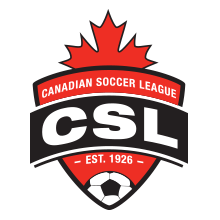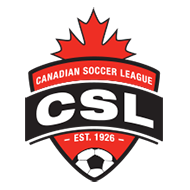A little more than a year ago, Toronto Croatia of the Canadian Soccer League created a documentary film – Toronto Croatia – Jedna Velika Hrvatska Priča – a Great Canadian Story, and the inaugural showing took place in Mississauga on January 17, 2014.

An important part of the story was the winning by Toronto Metros-Croatia of Soccer Bowl 76, which was emblematic of the soccer championship of the United States and Canada. Toronto Metros-Croatia, a club formed by a merger of Toronto Metros of the North American Soccer League and a Croatian group representing Toronto Croatia of the National Soccer League (a forerunner league of today’s Canadian Soccer League), attracted a number of soccer stars leading to winning the North American title, including Portuguese superstar Eusébio. The Toronto Metros-Croatia victory for a Toronto team was the first since the Toronto Maple Leafs won the Stanley Cup in 1967.
Present at the showing in Mississauga, was Dick Bezic, who was a principal representative of the Croatian group that negotiated the purchase of shares for Toronto Croatia and Bruce Thomas, the major shareholder with the original Toronto Metros.
The following article,written by Michael Lewis, ‘How Eusébio and a team of Canadian Croatians took North American soccer by storm’, which appeared in The Guardian on February 11, touches on the trials and tribulations of the new Toronto Metros-Croatia during the few years the club existed.
The team had salaries paid for by their own fans in the basement of a Toronto church, boasted one of the world’s greatest players and secured the first major championship by a Canadian football club. And the Toronto Metros-Croatia managed all this in one tumultuous season, despite being a giant thorn in the side of their own league.
During their short four-year existence, the Metros-Croatia proved to be a colorful, intriguing and entertaining team, even if the North American Soccer League would have preferred the club to go away or least change their name. No North American pro football team had an ethnic name associated with it – before or since.
“How we kept our sanity through the whole season, I really don’t know,” says Aldo Principe, the general manager of the club in their 1976 championship season. “Our season has been from one extreme to the other. We got lost somewhere in the middle, but we found ourselves in time. No one gave us much of a chance.”
In 1975 the NASL was poised take a higher orbit in American professional sports. Pele signed with the New York Cosmos, an event that would open the door to some of the biggest football names on the planet – Franz Beckenbauer, Carlos Alberto, Johan Cruyff, Bobby Moore, Giorgio Chinaglia and Eusébio.
At the other end of the spectrum were the Toronto Metros, struggling to keep themselves afloat. The owners, who were deep in debt, sold the team to members of Toronto Croatia, a side that played in the National Soccer League of Canada. The Croatians renamed the franchise the Metros-Croatia, much to the chagrin of the league, which wanted to avoid ethnic affiliations as it went mainstream.
“It was obviously important to maintain the franchise in Toronto and this was the group that came forward to buy out the existing owners, who at that point could not continue,” says Ted Howard, who was the NASL’s director of administration at the time. “Basically, the league was in a situation where beggars couldn’t be choosers. They had a solvent ownership group that was dedicated.
“The biggest concern in a lot of ways, the name was a concern because it didn’t say what we wanted it to say to the public at large, that it sounded more like a club team in a city rather than a club team in an international league.”
That vision, however, would have to wait a few years.
“We knew we weren’t liked very much around the league because we had an ethnic name,” Metros-Croatia defender Damir Sutevski says. “Considering that the league was in the beginning stages, they had to take, accept the offer, of Croatia but they didn’t like it.”
The Metros-Croatia captured Soccer Bowl 1976, the NASL championship. Yet the club’s owners and front office felt they were treated as though they were the black sheep of the league.
“We’re the underdogs no matter where we’ve been,” says George Simcic, who was the club’s general manager in 1977. “We’ve been pushed around by the rest of the league and press.
“They called us winning the championship [in 1976] something incredible. What’s so incredible? So what if we don’t have the marketing a New York, Tampa or Minnesota has. That has nothing to do with the game on the field. They have the money. We have the team.”
The Metros-Croatia used some rather unconventional methods to operate a championship team. With the club deep in debt in 1976, after one Sunday service at the Our Lady Queen of Croatia church, several members of the congregation met in the basement to take up a collection. The goal was to pay the salary of Filip Blaskovic, a superb central defender from Croatia, which at that time was part of Yugoslavia. Hundreds of Metros-Croatia shareholders belonged to the church, which was the focal point of social activities in the community.
According to one witness, “It’s like a social club. They take up a collection and you see dollars and checks all over the place. By the time they were finished, they had raised $10,000 for Blaskovic. What they [did] is common is common knowledge in Toronto. When you need financial attention, you know they’re [Croatians] there. It’s not a very professional way of running things, but it did the job.”
The church did not have a problem with that set-up. “Our members directly support the team,” Father Gjuran of the church said in 1977. “The church doesn’t give directly. But I’m a soccer fan because of it.”
“The way the salaries were set up they were based on European standards,” Sutevski said. “You had a base salary and you had bonuses for each win. So the hats were passed to the fans. Basically they were collecting money for the best players and then we shared between all of the players.”
Sutevski remembered that each player received a bonus of $1,000-$1,500 a game. “Of course, as we progressed in the playoffs, the bonuses were getting higher and higher,” he added “We always remember the fact the people [gave] away from their hard-earned income to satisfy our needs and desires to win.”
The Metros-Croatia called Varsity Stadium, a 22,000-seat venue owned by the University of Toronto, home. There wasn’t a bad seat in the house. While the Metros-Croatia rarely filled the place, even a vociferous crowd of 6,000 could sound more like 16,000, given its extreme passion. The team, however, averaged only 5,555 a game in 1976, 15th out of a 20-team league that averaged 10,295 a match.
One Toronto sportswriter, who asked for anonymity, received a first-hand message how seriously those fans took the sport. “I reported the game perfectly straight, but I had to report that Croatia lost,” he said. “Two nights later I arrived home to find on my front step a big, furry bat, nailed to a board with a spike driven through its heart. It was a criticism from the [fans].”
The team had nine players of Croatian and Yugoslavian descent, with players from nine other nations represented, including Greece, Poland, Northern Ireland, Germany, Suriname, Hungary and Canada. And then there was Portuguese great Eusébio. The Ballon d’Or winner, who would go on to be voted of the 10 best footballers of the 20th century, was in the twilight of his legendary career but still a dangerous player.
“Needless to say, he was one of the greatest players in the world,” Sutevski said. “Even though he had a bad knee, he put everything he had in the game.”
Indeed. Eusébio, whose knee was constantly worked on by team trainer Pat Quinn, demonstrated he could produce some magic, scoring 16 goals in 21 matches and creating four others.
“A lot of [opposing] players were afraid of him because they knew his history,” Sutevski said. “His free kicks, his ball distribution, were awesome.”
Similar superlatives also could be bestowed on Brazilian midfielder Ivair Ferreira, nicknamed “The Prince,” according to Sutevski, and German midfielder Wolfgang Suhnholz, a mid-season acquisition who became the midfield general.
After enduring a mid-season swoon in which the team failed to score in seven consecutive games, Toronto’s intense and demanding coach Ivan “The Terrible” Markovic got into a confrontation with Eusébio. A major change was on the horizon.
Markovic benched Eusébio for a home game against Pele and the New York Cosmos on 7 July. Word had it that the Black Panther was sick or was trying to recover from a leg injury as he missed a 3-0 defeat. “Sick? Eusébio asked in disbelief, according to the Toronto Star. “I’m healthy. This has never happened to me in my life. I can’t believe it. … There is a lot of politics involved.”
One club official said that Eusébio, who was considered a disruptive force, would be placed on waivers, the prelude to a player getting released. Everything was turned upside four days later. After a 2-1 home win over the Portland Timbers, in which Eusébio broke a team scoreless streak of 775 minutes and nine seconds (the NASL measured time in minutes and seconds, rather than hours), Markovic was fired.
Marijan Bilic, who directed the team to a 13-9 mark in 1975, was reinstated as coach and he brought in Domagoj Katepanovic as his tactician. It was a bumpy ride at first as the team lost three successive matches before reeling off four straight wins to finish with a 15-9 record, second in the Northern Division and tied for the sixth best overall mark.
On the eve of their playoff opener against their arch-rivals, the Rochester Lancers on 18 August, the team found themselves without their starting goalkeeper as Paulo Cimpiel staged a one-man strike, demanding more money. The club promoted Zeljko Bilecki, who had played only three times during the regular-season.
Bilecki, who made several vital saves, wasn’t even the hero. Defensive midfielder Gene Strenicer, who had not scored during the regular season, tallied a controversial goal with only second remaining in regulation for a 2-1 win (there was no stoppage time in those days). “God helped us tonight,” Bilic told reporters. “We needed somebody’s help tonight.”
Two days later, Ferreira, struck twice in 3-2 shootout win over the host Chicago Sting, 3-2. The Metros-Croatia then dispatched the defending champion Tampa Bay Rowdies, 2-0, in the semi-finals as Eusébio and Ted Polak found the back of the net. “We didn’t think we were going to make it past Tampa,” Sutevski says. “That was a weird surprise.”
That set up an 28 August Soccer Bowl confrontation with the Western Division champions Minnesota Kicks, who were considered favorites on the strength of their youth, speed and dynamic attack (54 goals in 24 matches). They had won 10 of their last 11 matches.
CBS TV announcers were given directives by the league not to use the nicknames of the teams, only their city names, to keep away from the ethnically-based Croatia.
But that was no way the Metros-Croatia could be stopped on the field though, as they rolled to a 3-0 triumph in Seattle’s Kingdome. Eusébio scored via a 40th-minute free kick. Ivan Lukacevic and Ferreira added two more in the second half. Suhnholz was named the game’s outstanding player.
Sutevski attributes the team’s success to their “experience and knowledge of the game. … Everyone tried very hard. The team didn’t get hurt. They called us a Cinderella team because no one gave us a chance to win the whole thing.”
The problems with the league continued though. The NASL, in the first paragraph of its report on the Soccer Bowl, called the team the Toronto Metros, leaving out Croatia. On top of that no Metros-Croatia was selected as first- or second-team all-stars, though Suhnholz and Cimpiel received honorable mentions.
Simcic felt the league’s failure to recognize the club as the Metros-Croatia cost them $200,000 in potential investments from the Croatian community, a decent sum of money in those days. “I personally feel it’s an injustice made on the owners of the team,” he says. “They approved the name … so why not keep it? There wouldn’t be a franchise in Toronto if it wasn’t for the Croatian community.”
The team lasted another two years before Prosoccer Limited purchased it prior to the 1979 season, ending the ethnic affiliation. It was renamed the Toronto Blizzard and moved to the larger CNE Stadium. “We wanted a name which could be identified with Canada,” the team president, Bruce Morton, said. “A name which could meet the perception of Canada held by most North Americans and Europeans.” The Blizzard advanced to Soccer Bowl in 1983 and 1984, but never quite reached their predecessors’ heights.
Toronto FC have since taken up the mantle. In contrast to the Metros-Croatia’s success, FC have struggled and have never reached the playoffs since joining Major League Soccer in 2007. That is a rather dubious distinction considering almost half the teams reach the postseason every year.
As for the likelihood of a team return with an ethnic name returning to North American professional football, the chances are slim if not impossible. “I don’t foresee that happening because the [new] league is a lot stronger now,” Sutevski says. ‘I don’t think the league itself would let it happen.”
Although if MLS did, it could lead to some intriguing adventures, not unlike the Toronto Metros-Croatia themselves.

